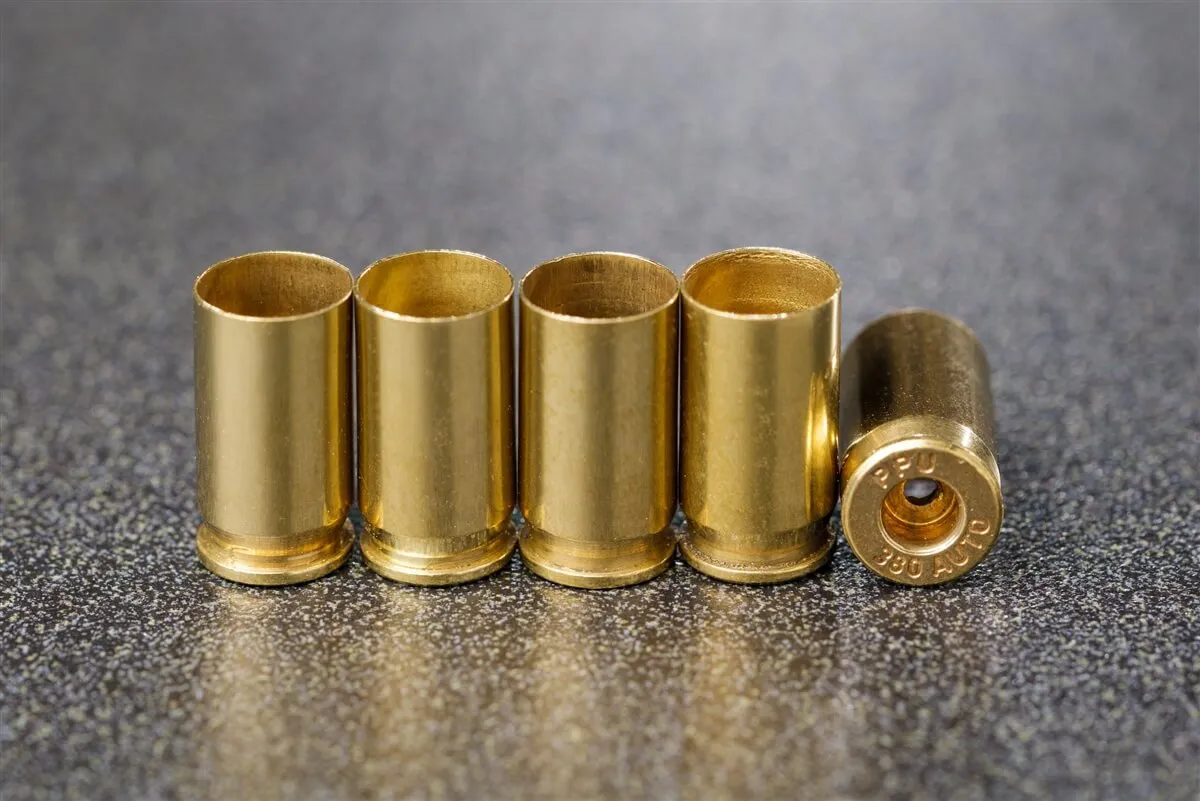Does your gun look boring? Are you a huge fan of soccer? Maybe you just want to protect your hunting rifle and keep that safe queen look once the season is over, either way - wrapping your firearm in protective vinyl with Premium Skins and Gun Skins might be the answer!
We've got both side-by-side for testing to let you know exactly who the best is.
What Are Premium Skins & Gun Skins?
Both of these products are more or less the same thing - vinyl wraps for your guns. Wrapping stuff in vinyl isn't anything new, in fact, it dates back to the 1950s. Cars and buses have been getting wrapped since the early '90s and more recently it's become fairly common for loads of applications.
Including your guns.
Vinyl wrappings are basically plastic cloth-like stuff with designs printed on one side and adhesive on the other side. Heat it up, slap it on a surface, and you're done!
A new coating of protection and coolness is now on the thing you wrapped.
Premium Skins and Gun Skins are two major makers of firearm-oriented vinyl wraps. Both use 3M vinyl, but different types and with very different options.
Selecting Your Skin
Head to either site for Premium Skins or Gun Skins and you'll see that both offer loads of options. Everything from simple camo patterns to... soccer balls. Don't ask me why.

The more practical options include things like Realtree and Kryptek Camo or fun options like a range of US flag patterns to some really strange stuff like those soccer balls or zombie skulls.

I went with a US flag wrap from both brands since it's one of the few options that both offer and 'murica. I also got a skulls design from Premium Skins because why not.

Application Basics & Tools
Applying anything to any surface is all about prep work. Painting a house, rattle can your AR, or wrapping a car - a good clean surface is critically important.
You'll also need something to cut the wraps with and a heat source to activate the adhesive.
Plus some easy tools to make smoothing down the wraps a lot easier.
I picked up a few things off Amazon for the job:
- Black & Decker HG1300 Heat Gun
- Customizable Polyethylene Foam Pads
- Plastic Felt Edge Squeegee
- X-Acto No 1 Precision Knife
All of these tools are also available from Premium Skins and Gun Skins as well.
I also used denatured alcohol as by solvent/cleaner.
According to the instructions you can get by with a hairdryer, but a heat gun is faster and easier.
The Black & Decker I got worked fine but it also smoked for the first 5 minutes of use. Not a thick smoke, but enough to make me wonder.
I strongly recommend the knife, squeegee, and foam. The foam was surprisingly useful for pushing down the vinyl and getting a nice tight fit.
For this project, I'm using my Smith & Wesson SD9VE. This was actually the first pistol I ever bought, since then I've put more than 4,000 rounds down the pipe.
Step 1: Cleaning
A good cleaning is in order first. If you have dirt or dust on the gun, rinsing in water and drying it well will be required. My gun was pretty clean to start with so I went straight to the denatured alcohol to get any trace oils off.
I started with my frame first, but you do you.

Damp a cloth, wipe the gun off, good to go.
I hit the frame/slide with a little heat after wiping it down just to make sure all of the denatured alcohol was evaporated, not required but it's what I did.
Make sure you remove any solvents from your work area before starting to use the heat gun. Heat guns and flammable liquids aren't a good mix.
Step 2: Lay It Out
Peel the vinyl from the kit and lay it on the workpiece, and press to set it. It's really that easy.
I normally heated the surface for a few seconds before applying the vinyl just to give it a little more adhesion, but this really wasn't required.


If you're good at wrapping presents, this won't be too hard of a project for you. But if you suck at it as I do... results may vary.
Step 3: Trim
The vinyl comes as large sections that are roughly larger than the item you're working on, so a good amount of trimming and cutting is required.
Major cuts are needed just to shape the vinyl but lots of little cuts are also needed. The precision cuts are mostly for controls like the magazine release, slide release, etc. They are also so things look nice.


Step 4: Heat and Press
Once you have things generally shaped and ready to go, heat it up and press. I think I overheated my vinyl several times, so be better than me and start with less heat than you think you need.
You can always heat more if you don't have good adhesion. Start with 5-7 seconds of heat, press, and see how it feels. If it isn't flowing into spaces fairly well or not sticking down, hit it with some more heat.
Be careful of any metal parts - they will get hot.

Getting into the corners with the squeegee helps to press things down. The foam is wonderful for large areas and for getting the vinyl into the textured parts of the grip.

Step 5: Tips & Tricks
Take your time.
Don't expect perfection.
This will heavily depend on your own skill and how much of a perfectionist you are. Wrapping presents are a major skill and it will help a lot if you're good at it.
That said, I suck at things like this and it still came out a lot better than I expected.

The second application I did came out cleaner than the first and I think if I did a couple more I might get a hang of it.
If you want your wrap to look as good as possible and you haven't done something like this before, you might want to order two kits or a smaller kit for a random gun or something to get some practice.
The good news is that both kits were very easy to remove and left no residue.
Gun Skins: 'Murica
I really like how this came out. This was the first kit I did so the application was a bit messy in some ways but the kit itself came out wonderful.

Gun Skins uses a 3M vinyl and different printing patterns for each section of the kit. The end result is a very clean look.
I screwed up I think and got the slide too hot at one point which resulted in some boiling. That is purely my fault, but it's something to keep in mind while you apply your kit.

The vinyl used is on the thicker side so it cuts very cleanly and makes getting smooth lines pretty easy if you take your time and have a sharp blade.
How well the final product looks is up to you. I wasn't super concerned with making this perfect since I was doing this just to review the product. As such, I left little gaps here and there.
If you wanted to fill in any gaps you made in the first cut, you should have plenty of vinyl left over from the clips to take small pieces and patch things.
Premium Skins: Skulllls
Application was the same process but felt much different. Premium Skins uses a thinner vinyl than Gun Skins does so working with it simply feels different.

Where Gun Skins is really easy to cut but hard to rip, Premium Skins is easier to tear but can be a little finicky to cut.
My blade was starting to get stuck when cutting the Premium Skin, but after some more testing, I think that is because my blade was getting dull.
Pro tip: use multiple blades if you're doing a large project or multiple skins.

A major positive of the thinner vinyl was that it flowed into small spaces easier than the Gun Skins did. This was very notable on the textured parts of the grip.

Not only was the Premium Skin looking better on the grip, but it also felt better too since it preserved more of the original texture.
And The Winner is...
All things considered, I don't think there is a huge winner here.
Both are perfectly usable, both work well. Gun Skins was a little easier to apply, and Premium Skins felt a bit better in the hand after.
Overall - get the one with the pattern you like best. That is the biggest factor and that should guide your choice.
Wrapping Up
I went into this really not expecting much. I've never vinyl wrapped something before and I've never even seen one in person on a firearm.
After using the Premium Skin and Gun Skins, I kind of like it. They work well on anything from a Glock 9mm to an AR-15 or a good old fashion lever-action rifle.
I don't think I'd wrap one of my guns with the silly patterns anytime soon, but one of the camo options might look pretty slick on my Sig Sauer Cross.
The really nice thing is that the wrap comes off super easy. Apply a little heat and it peels right off with zero residues left behind.
Plus, this is a LOT cheaper than something like Cerakote.













